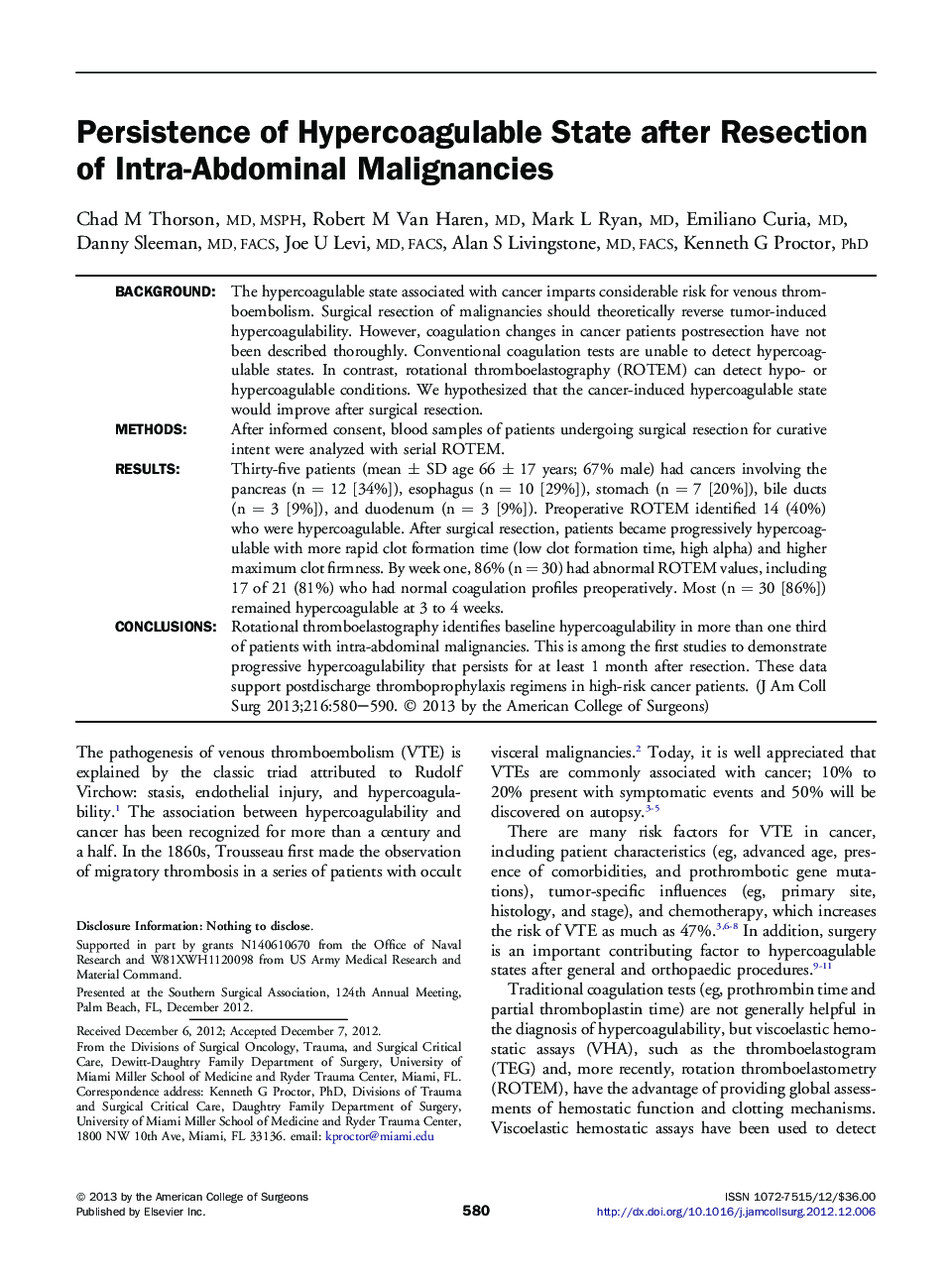| کد مقاله | کد نشریه | سال انتشار | مقاله انگلیسی | نسخه تمام متن |
|---|---|---|---|---|
| 4293081 | 1612248 | 2013 | 10 صفحه PDF | دانلود رایگان |

BackgroundThe hypercoagulable state associated with cancer imparts considerable risk for venous thromboembolism. Surgical resection of malignancies should theoretically reverse tumor-induced hypercoagulability. However, coagulation changes in cancer patients postresection have not been described thoroughly. Conventional coagulation tests are unable to detect hypercoagulable states. In contrast, rotational thromboelastography (ROTEM) can detect hypo- or hypercoagulable conditions. We hypothesized that the cancer-induced hypercoagulable state would improve after surgical resection.MethodsAfter informed consent, blood samples of patients undergoing surgical resection for curative intent were analyzed with serial ROTEM.ResultsThirty-five patients (mean ± SD age 66 ± 17 years; 67% male) had cancers involving the pancreas (n = 12 [34%]), esophagus (n = 10 [29%]), stomach (n = 7 [20%]), bile ducts (n = 3 [9%]), and duodenum (n = 3 [9%]). Preoperative ROTEM identified 14 (40%) who were hypercoagulable. After surgical resection, patients became progressively hypercoagulable with more rapid clot formation time (low clot formation time, high alpha) and higher maximum clot firmness. By week one, 86% (n = 30) had abnormal ROTEM values, including 17 of 21 (81%) who had normal coagulation profiles preoperatively. Most (n = 30 [86%]) remained hypercoagulable at 3 to 4 weeks.ConclusionsRotational thromboelastography identifies baseline hypercoagulability in more than one third of patients with intra-abdominal malignancies. This is among the first studies to demonstrate progressive hypercoagulability that persists for at least 1 month after resection. These data support postdischarge thromboprophylaxis regimens in high-risk cancer patients.
Journal: Journal of the American College of Surgeons - Volume 216, Issue 4, April 2013, Pages 580–589